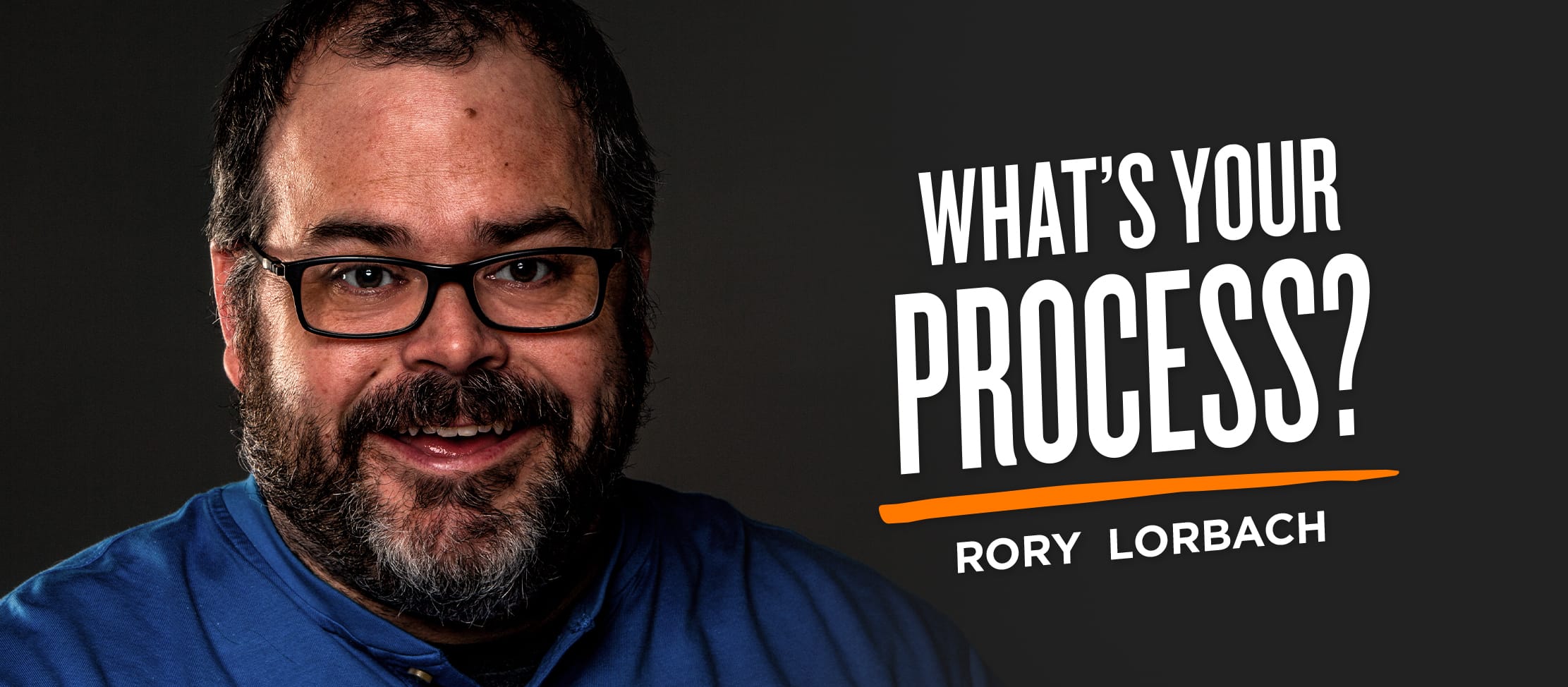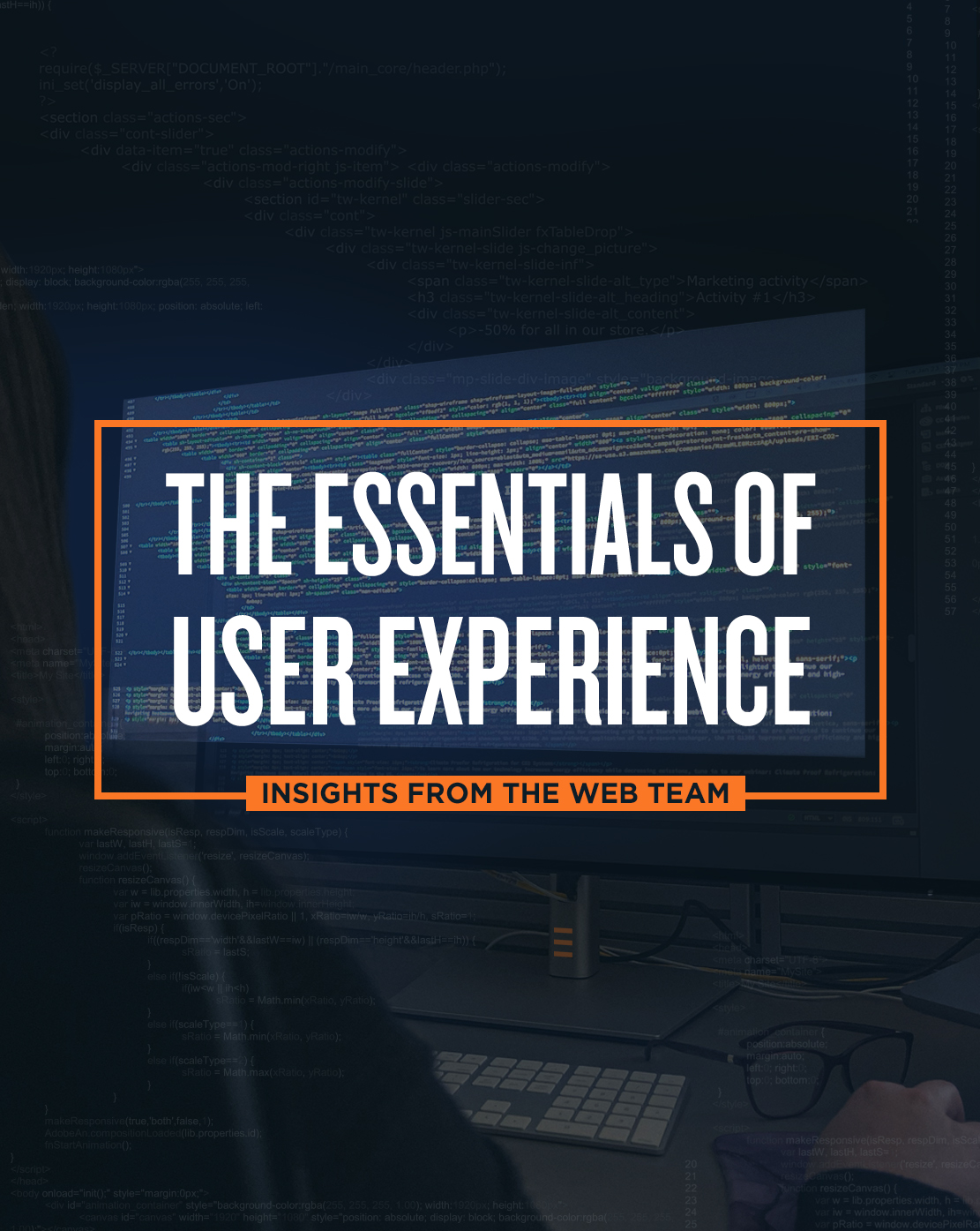
What’s Your Process? Q&A with Rory Lorbach
What’s Your Process is a Q&A series at EPIC where we ask our team members to share how they produce creative content to meet the needs and desires of our clients.
EPIC Web Development Supervisor Rory Lorbach is the captain of the team
When it comes to new website builds or projects, Rory helps steer the ship of decision-making for what web platforms, technologies, and processes will be used for the client. He collaborates with web designers, digital producers, and content specialists to successfully execute our client’s goals.
If an issue comes up with a website, he oversees and provides support if something needs to be adjusted. His approach to problem-solving and researching solutions is one thing that makes him stand out as a leader.
From production oversight to a reliable safety net, Rory is a crucial team member behind the strategic implementation of web projects for our clients. In this Q&A, you will learn how Rory guides our web team to help meet our clients’ goals and bring our designers’ visions to life.
What does a successful project look like to you, and how do you make that a reality?
A successful web project satisfies the client in two key ways. There’s that visual satisfaction factor, but it should also, and most importantly, focus on achieving business goals as well.
When creating a website, the desire is to draw traffic to that site and engage the user. Visual satisfaction includes both functionality of the site and making sure everything works according to the design. There also needs to be an established set of goals the client wants to achieve. For example, if lead generation was a key goal, our team would place proper tracking on the site related to that specific goal, to ensure that we are getting the proper results. There also might be unique functionality, like filtering, online payments, product registrations, etc., that we will need to determine the best approach to executing.
If a website achieves both visual satisfaction and meets a client’s business and functionality goals, then we will have a successful outcome. It doesn’t stop at go-live, but it is a continuous process to monitor the strengths and weaknesses based on analytics and traffic, and adjust accordingly. As far as making it a reality, it’s a matter of staying on budget, meeting timelines, and making sure things run as smoothly as possible both externally and internally.
When you encounter a problem with a project, how do you solve it?
Collaboration. We’ve had instances where something changes with the client’s needs as the project evolves. It’s generally a matter of having the developer, project manager, account manager, and the creative department put their heads together to figure out the best viable alternative, or new approach that will achieve client objectives.
That’s really what we do when we run into a problem. It’s about communicating with the client and developing either viable alternatives, or prioritizing to make sure we achieve the objectives of the site.
Why is it beneficial for a client to have a well-developed website?
A website needs to allow a visitor to easily get the information they want and contact the client if needed.
It’s important for a client to have a website that properly communicates their message, is visually engaging, and helps each user find what they are looking for. Whether they want to find out about product detail, general information about a company, or contact information, it needs to be easily accessible through navigation, callouts, and proper site hierarchy/mapping.
A well-developed site will also work behind the scenes to generate traffic. Proper usage of page structure, page speed, meta title, meta description, and other factors will play a pivotal role in how a site shows up on Google when searches are conducted. Better attention to detail in these areas will only help when someone is searching for the product or service a client offers.
If a website is poorly created, people will struggle to arrive at those places, and that’s what you want to avoid. Our focus is to help a client deliver their message with a website that satisfies both the client’s needs and the user’s.
How important is research in the beginning stages of web development?
It depends on what we establish as the goals of the site, but it can play a critical role in the efficient development of a site or application. If we put the needed time in before we get into the production of the site, it can minimize the need for revisions, and help things stay on track with the budget and timeline. Research could include competitive research and analysis, sample sites and ideas, technology research, and also leveraging analytics/traffic to see what is working or what can best work on a site or application.
It’s typically a matter of functional and competitive analysis with the developer and designer to figure out:
- What are some either competitor or related industry sites that we can share with the client, or have the client share with us to determine what tools or content on a site will help enhance user engagement?
- What are we trying to do with the site? Is there a core experience or functionalities we want to deliver? If so, we look into technology options and determine the best way to achieve functionality goals. Researching ways to do this in a budget-friendly way is critical to project success.
- How can we make this friendly to manage? This is often an overlooked point, but how would the client like to manage the site? Do they want more design control? Do they want custom fields that can get plugged into the pages, or do they want to leave it to us, the agency, to develop, add content, and maintain? All three of these are viable options, but should be determined before beginning a project, so we can develop the experience properly.
- How can we create a good user experience? What are some key form questions we would like to ask the visitor to capture leads properly?
So, there are potentially several components to the research and development for new sites/applications and projects.
What’s most important in the web development process?
I think it really comes down to getting to know the “Why” … understanding what we’re trying to deliver for the client’s business objectives, and determining how to achieve those goals.
Sometimes we are tasked with a request that may be confusing, or maybe we don’t quite understand what the objective is. It is our responsibility, as developers and industry experts, to ask some follow-up questions as to why this request has been made. Getting to that level of understanding, we can better gauge if the requested approach is the best solution, or if we need to explore alternative options that may be more friendly to things like budget and user experience.
Being efficient from a technical standpoint is also critical. Technology is evolving at such a fast pace, that one of our primary goals is making things as user-friendly as possible for both website visitors and from a management standpoint. Spending more time planning and strategizing in the beginning stages of a project makes it easier to update and manage long-term.
* * * * * * * * * * * *
As a web development supervisor, Rory is focused on finding the best solution for a task. He doesn’t just do what is asked. Instead, he strives to think beyond a request by asking questions that push the project team to think “outside the box.” As a leader, he wants the end result to be the best result, even if it takes a different approach or path than was initially developed.
Stay tuned for our next installment of “What’s Your Process?” when we hear Account Supervisor Laura Lindorfer’s process for working with clients to build and deliver on their marketing plans.
Recommended




